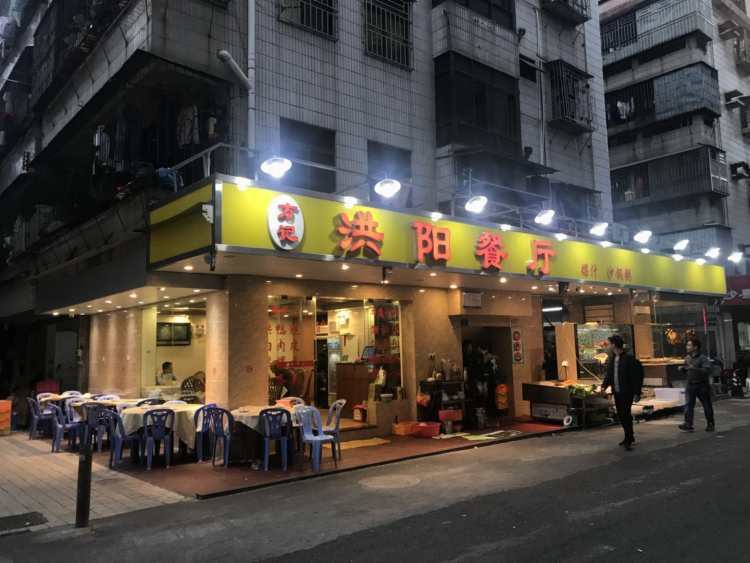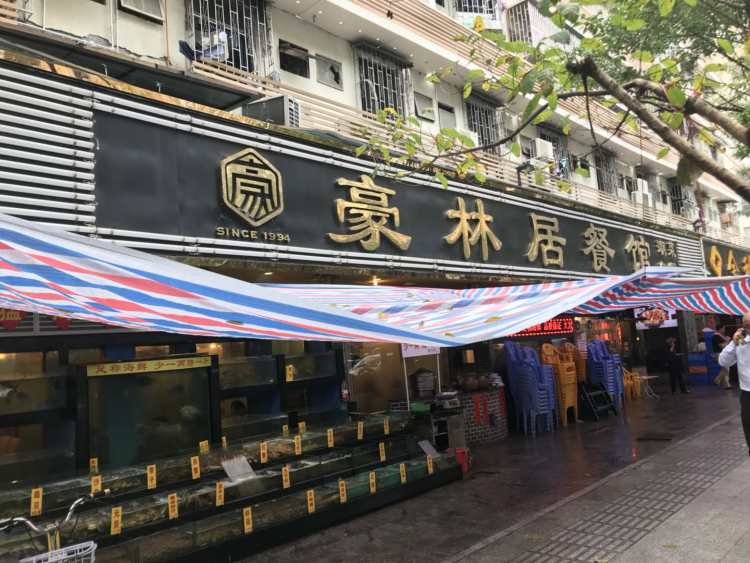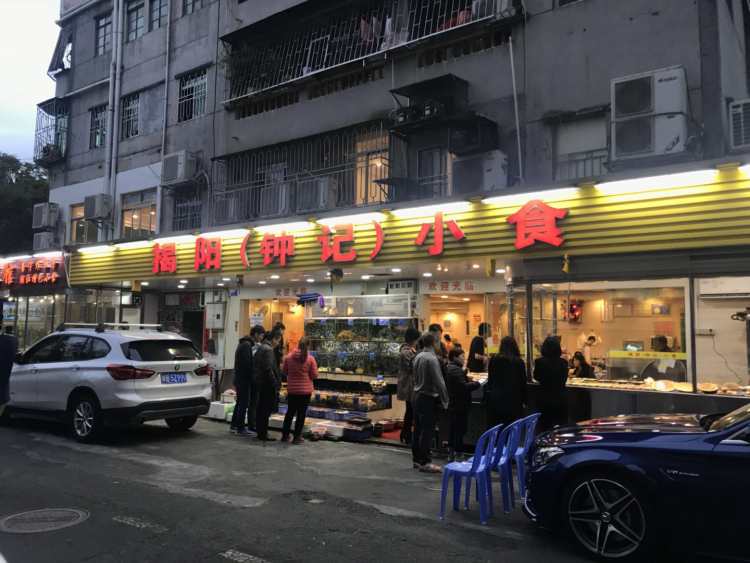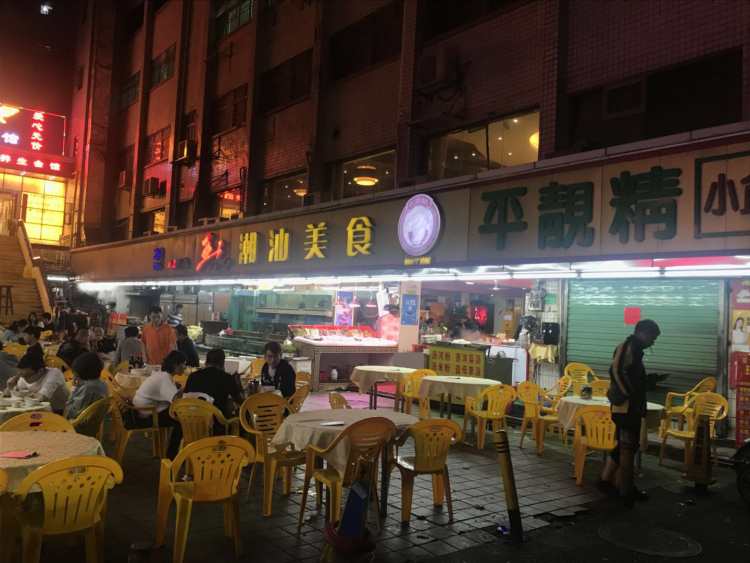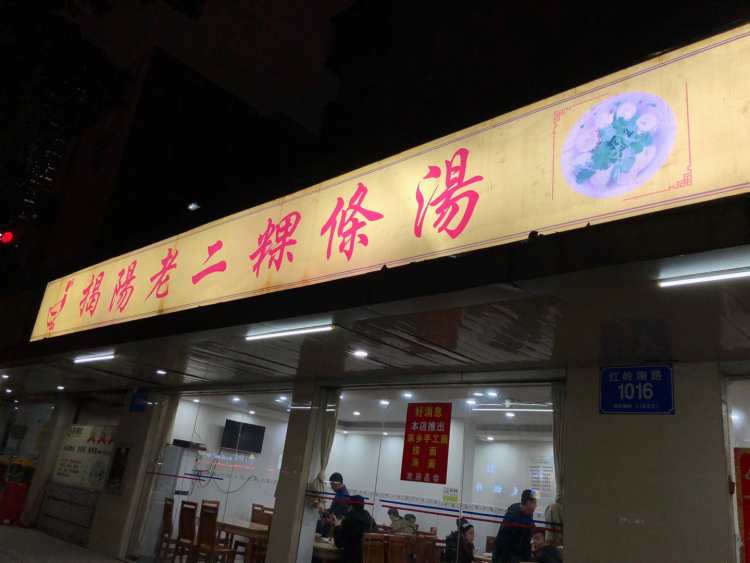Fang Kee Hongyang Restaurant is also a Chaoshan Da Leng food stall located in Futian New Village. Similar to Jieyang Zhongji, Fang Kee Hongyang Restaurant has also taken root here for nearly 20 years and has a good reputation among Chaoshan diners.
Hongyang refers to the owner's hometown of Puning Hongyang Town, and Hongyang is most famous for Hongyang kueh juice, in this Fangji Hongyang restaurant in Futian New Village, kueh sauce is its more than ten years of thunder and live signboard. The so-called kueh juice is a staple food of Chaoshan's rice products, and the main ingredient is triangular kueh slices made of rice milk. The kueh slices of Chaoshan kueh juice are divided into two types: cooking (steaming) method and roasting method, Hongyang kueh juice is the representative of the roasting method, the kueh slices have less water, the entrance is chewy, and the rice fragrance is richer. After the kueh slices are blanched, various ingredients are added, and hot soup is poured on them, and it becomes a bowl of Hongyang kueh juice. In addition to the water used in the broth, almost all the raw materials of Fang Ji Hongyang's kueh juice are transported from Puning, pork offal, meatballs, small fritters and other materials are full of delicious taste, the kueh skin taste is glutinous and slightly elastic, the entrance is soft but there is no lack of chewing, and the soup base is used to enhance the flavor, the taste is light, refreshing and palatable. In addition to the kuay sauce, the fried kuay teow in Fang Kee Hongyang is also the favorite of many old diners, and the method of stir-frying cabbage is more similar to Jieyang kuay teow, and the red pepper crushed in the fried kuay teow also allows the traditional fried kuay teow to jump out of the Chaoshan people's seldom spicy cooking habits, and the taste is brighter and more sultry.
Oyster branding is indispensable in Chaoshan cold fighting, and Fong Kee Hongyang is no exception, but another signature dish of Fong Kee, fried oysters with sauce, is rarely seen in Teochew restaurants. Fang Kee's sauce fried oysters are their own recipe, the oysters are full and fat, clean and tidy, the sauce is fried in a fierce fire, and the dried chili peppers, coriander and celery are juiced to enhance the flavor, delicious and appetizing, and the taste is fat and tender, which is quite amazing.
Of course, seafood dishes are indispensable in Chaoshan cold, and all kinds of local fish in Fang Kee Hongyang are the most flavorful methods, such as steaming mud with tangerine peel, boiling trash fish in a casserole, boiling hemp fish with pickles, and boiling bamboo with soybean sauce, each dish is classic enough, and other seafood such as boiled squid larvae, fried thin shell, etc., are basically free of worrying about stepping on thunder. All kinds of Chaoshan fried snacks, shrimp dates, taro cakes, etc. play normally, and Puning's famous fried tofu is a must-order at every table, crispy on the outside and tender on the inside, whether it is raw materials, heat, texture or taste, Fangji Hongyang's Puning tofu is impeccable. Interestingly, there is also a sugar lotus root in Fang Ji Hongyang's dessert, which is very similar to the osmanthus glutinous rice root in Jiangsu and Zhejiang cuisine. In fact, Chaoshan sugar lotus root is improved from the modern Chaoshan sugar Jia to imitate the glutinous rice root of Jiangsu and Zhejiang, the two are the same door, but they are slightly different, and the taste of Chaoshan sugar lotus root is sweeter.
The dining environment is often not a problem that needs to be considered in Chaoshan, and the same is true for Fang Ji Hongyang Restaurant. The location is similar to that of Jieyang Zhongji, and the laneway is slightly crowded at night, and diners who drive can park on the outskirts of the block or in the park parking lot.



